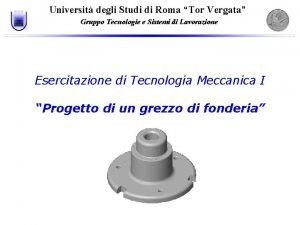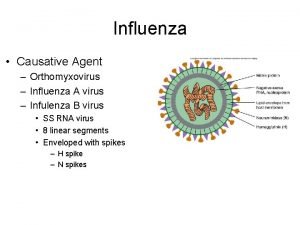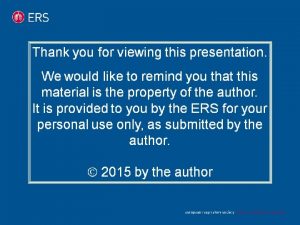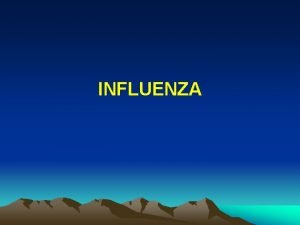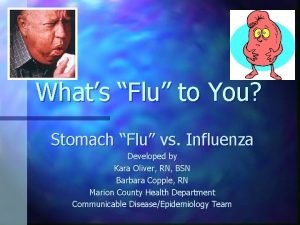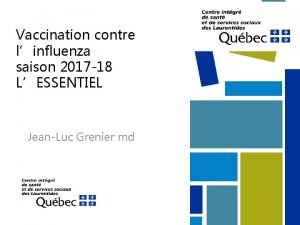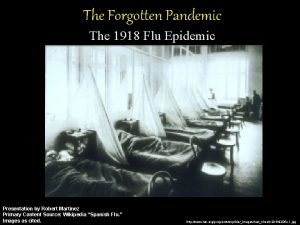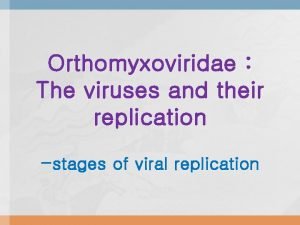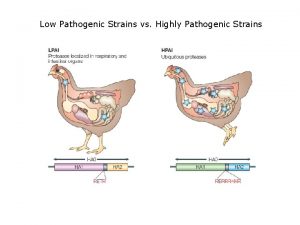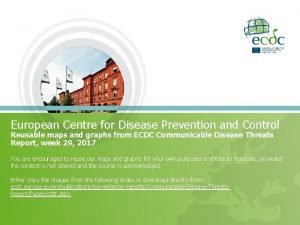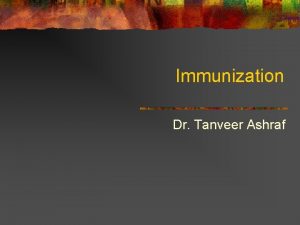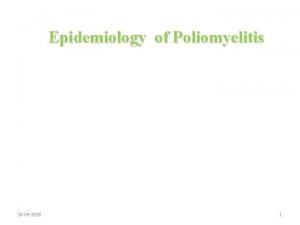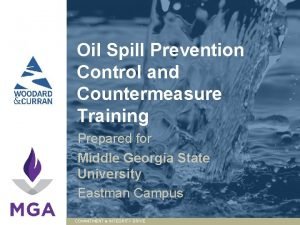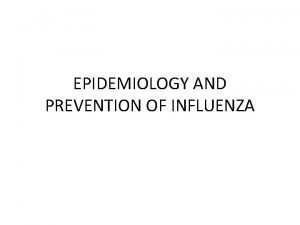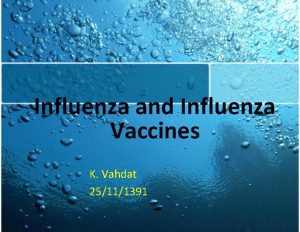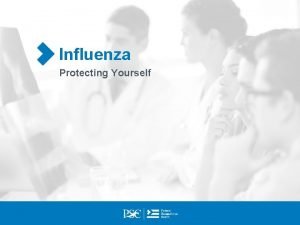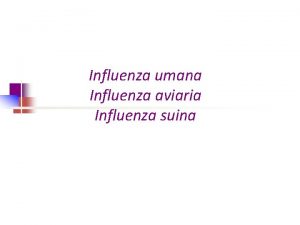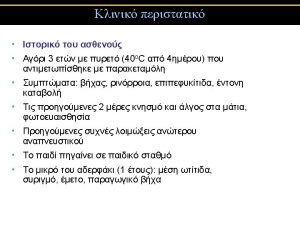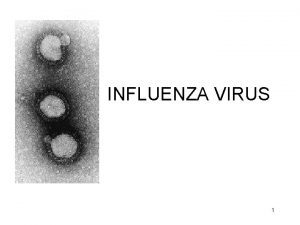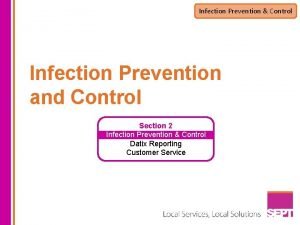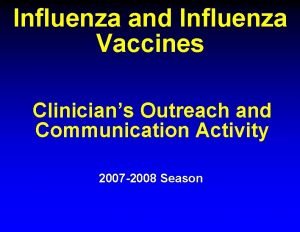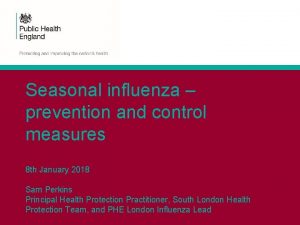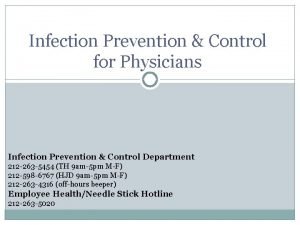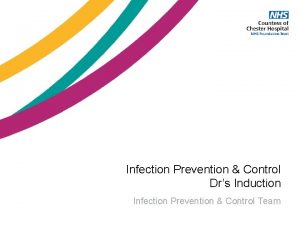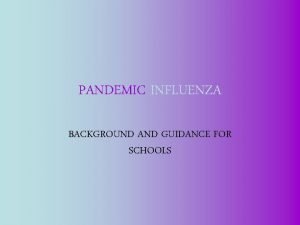Influenza epidemiology prevention and control Tom D Y






























- Slides: 30

Influenza: epidemiology, prevention and control Tom D. Y. Chin, MD. MPH Department of Preventive Medicine and of Medicine University of Kansas Medical Center

Importance of Influenza • One of the most important Emerging and Reemerging infectious diseases • Causes high morbidity and mortality in communities (epidemic) and worldwide (pandemic) • Epidemics are associated with excess mortality

Leading Causes of Deaths in the US • • Heart Disease Cancer CVD Chr Obst Lung Dis • Accidents • Pneumonia & Influenza • Diabetes Mellitus • HIV • Suicide • Homicide

Leading Causes of Deaths in the US • • Heart Disease Cancer CVD Chr Obst Lung Dis • Accidents • Pneumonia & Influenza • Diabetes Mellitus • HIV • Suicide • Homicide

Characteristics of Influenza Virus • • • Types A, B, C Diameter 80 - 120 nm Pleomorphic, spherical, filamentous particles Single-stranded RNA Segmented genome, 8 segments in A and B Hemagglutinin and Neuraminidase on surface of virion

Causative Agent of Influenza • Caused by a virus belonging to the MYXOVIRUS group which comprises of Orthomyxovirus and Paramyxovirus • Influenza virus is an Orthomyxovirus


Classification of Influenza virus • Classified on the basis of hemagglutinin (HA) and neuraminidase (NA) • 15 subtypes of HA and 9 subtypes of NA are known to exist in animals (HA 1 -15, NA 1 -9) • 3 subtypes of HA (1 -3) and 2 subtypes of NA (1 -2) are human influenza viruses. HA 5, 7, 9 and NA 7 can also infect humans

Discovery of Influenza Virus • First isolated from a pig in 1931 (swine flu) • Isolated from human in 1933

Nomenclature of Human Influenza Virus

Mode of Transmission In Human • The virus is spread from person- toperson through respiratory secretions either as droplets (close contact) or as airborne infection by droplet nuclei suspended in the air. • Incubation period 1 -3 days

Clinical Manifestations • Influenza is an acute respiratory illness characterized by fever, headache, myalgia, coryza, sore throat and cough. Cough is frequently severe and protracted. • Duration of illness is usually 2 -7 days.

Clinical Diagnosis • The clinical picture of influenza is nonspecific. • Influenza-like illness can be caused by many microbial agents other than influenzavirus, such as adenovirus, parainfluenza viruses, coronavirus, Mycoplasma pneumoniae, Chlamydia pneumoniae, beta-hemolytic streptococcus.

Laboratory Diagnosis • Since the clinical picture of influenza is nonspecific, its specific diagnosis must be confirmed by laboratory tests. • This is usually made by virus isolation, identification of specific antigens or antibody rise.

Antigenic Variation Influenza viruses tend to undergo changes from time to time. There are two types of changes: (1) antigenic shift, (2) antigenic drift. These changes in the antigenic characteristics of influenza viruses determine the extent and severity of influenza epidemics

Antigenic Shift • This term denotes MAJOR changes in hemagglutinin and neuraminidase resulting from reassortment of gene segments involving two different influenza viruses. • When this occurs, worldwide epidemics may be the consequence since the entire population is susceptible to the virus.

Pandemic Influenza Viruses

Antigenic Drift • This term denotes MINOR changes in hemagglutinin and neuraminidase of influenza virus. • This results from mutation in the RNA segments coding for either the HA or NA • This involves no change in serotype; there is merely an alteration in amino acid sequence of HA or NA leading to change in antigenicity.

Influenza A (H 3 N 2) Variants • • • A/Port Chalmer/73 A/Victoria/3/75 A/Texas/1/77 A/Bangkok/79 A/Philippines/2/82

Influenza A Epidemic Excess Mortality, US

Death Rates of Persons with ARI during Influenza Epidemics, Houston, 1978 -1981

Hospitalization Rates for ARI during Influenza Epidemic, Houston, 1980 -81

Rates of Visits to Physicians for ARI during Influenza Epidemic, Houston, 1983

Reservoirs of Influenza Viruses • Aquatic birds • Pigs • Humans


Control Measures • Immunoprophylaxis with vaccine • Chemoprophylaxis and chemotherapy

Types of Vaccine • Inactivated, consisting of (1) wholevirus, (2) subvirion, (3) purified surface antigen. Only subvirion or purified antigen should be used in children. Any of the three can be used for adults. • Live attenuated

Influenza Vaccine, who should receive it • Persons 65 yrs or older • Persons with heart, pulmonary, renal and metabolic diseases. • Persons in nursing homes and other longterm care facilities • Persons 6 mos-18 yrs old receiving aspirin therapy

Influenza vaccine recipients-continued • Women in 2 nd or 3 rd trimester of pregnancy during flu season. • Household members of persons in high-risk groups • Health care workers and others providing essential community services.

Antiviral Drugs • Amantadine, rimantadine. Effective for prevention and treatment of flu A only. • Zanamivir, oseltamivir are approved for treatment of uncomplicated flu A & B; oseltamivir also approved for prophylaxis. • Prophylaxis must be continued throughout the epidemic; treatment must begin within 24 hrs of onset of illness.
 Primary prevention secondary prevention tertiary prevention
Primary prevention secondary prevention tertiary prevention Cbic recertification
Cbic recertification Symbols in the devil and tom walker
Symbols in the devil and tom walker Modulo termico materozza
Modulo termico materozza Causative agent of influenza is
Causative agent of influenza is The great influenza rhetorical analysis essay
The great influenza rhetorical analysis essay Olfactory mucosa
Olfactory mucosa Influenza
Influenza Stomach flu vs influenza
Stomach flu vs influenza Is influenza a airborne disease
Is influenza a airborne disease Rimantidina
Rimantidina Influenza vaccine dosage chart 2019-2020
Influenza vaccine dosage chart 2019-2020 Influenza ww1
Influenza ww1 Influenza virus replication
Influenza virus replication Low pathogenic avian influenza
Low pathogenic avian influenza Tomtom go 910 update
Tomtom go 910 update Spill response steps
Spill response steps Dfpc jprs
Dfpc jprs Chapter 26 infectious disease prevention and control
Chapter 26 infectious disease prevention and control European centre for disease prevention and control
European centre for disease prevention and control Chapter 16 infection prevention and control
Chapter 16 infection prevention and control Prevention and control of poliomyelitis
Prevention and control of poliomyelitis Prevention and control of poliomyelitis
Prevention and control of poliomyelitis Thesourceagents
Thesourceagents Define nutritional epidemiology
Define nutritional epidemiology Difference between descriptive and analytical epidemiology
Difference between descriptive and analytical epidemiology Incidence and prevalence meaning
Incidence and prevalence meaning Person place time epidemiology
Person place time epidemiology Spill prevention control & countermeasures training
Spill prevention control & countermeasures training Ukuran asosiasi
Ukuran asosiasi Logistic regression epidemiology
Logistic regression epidemiology



